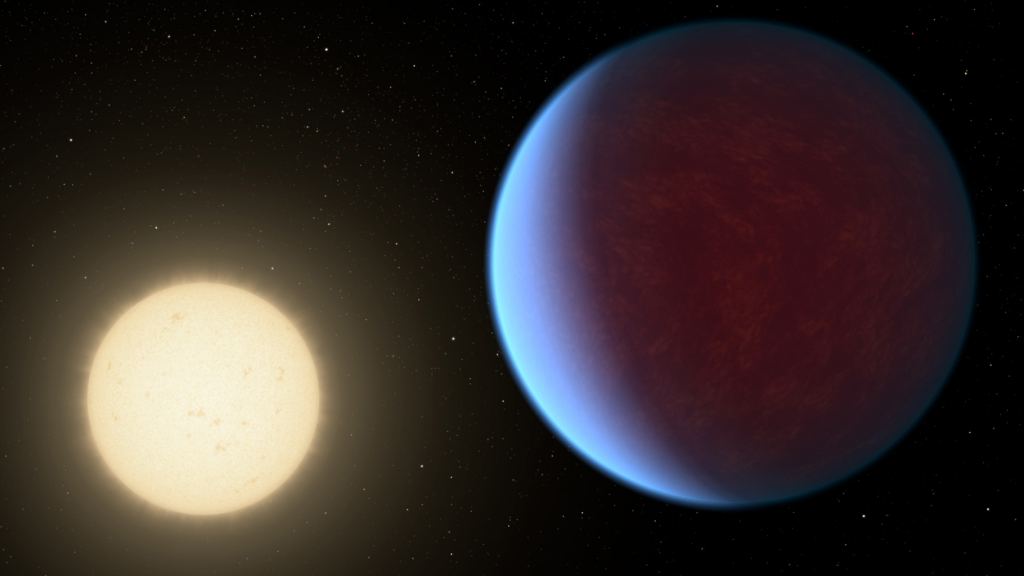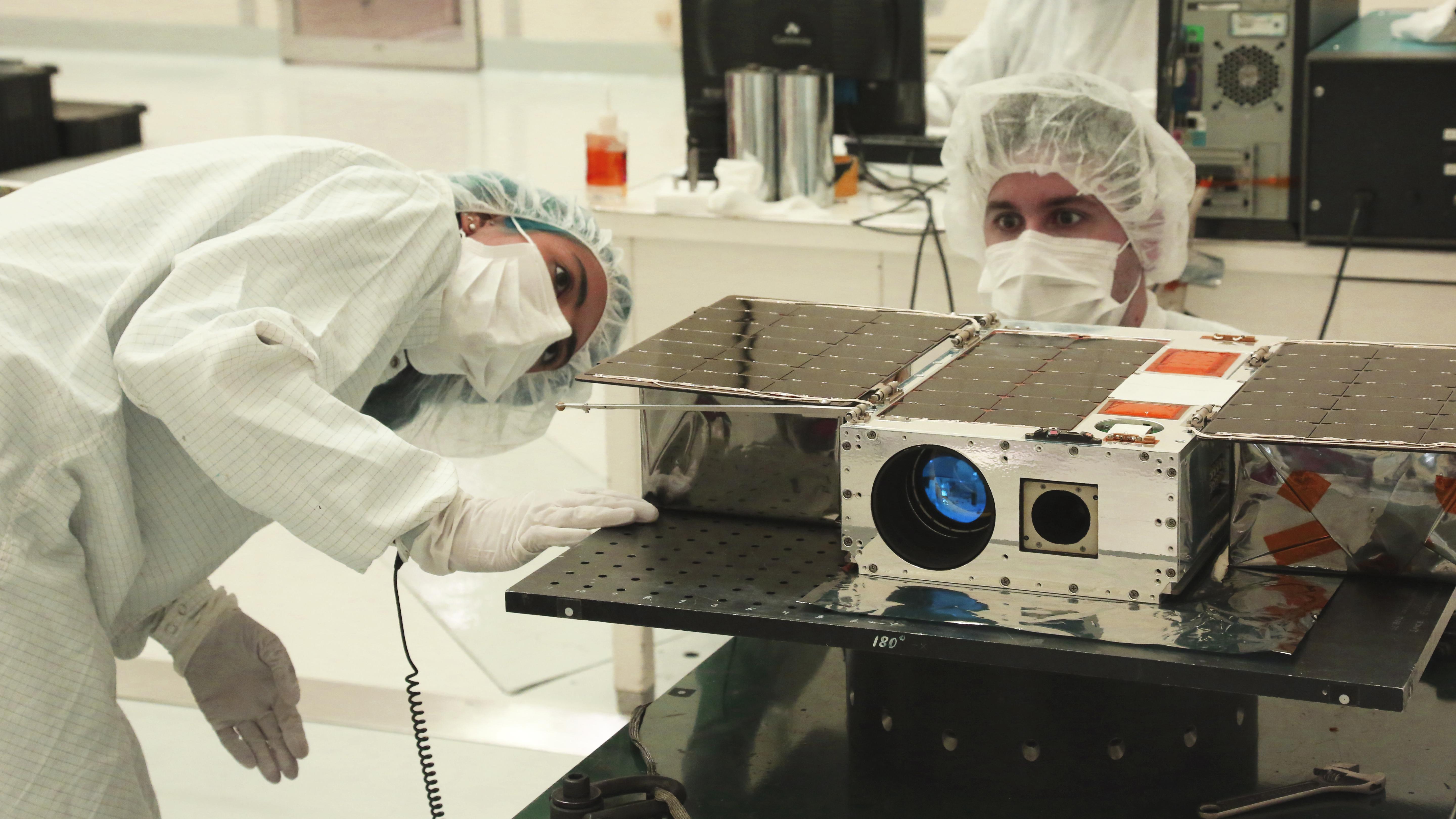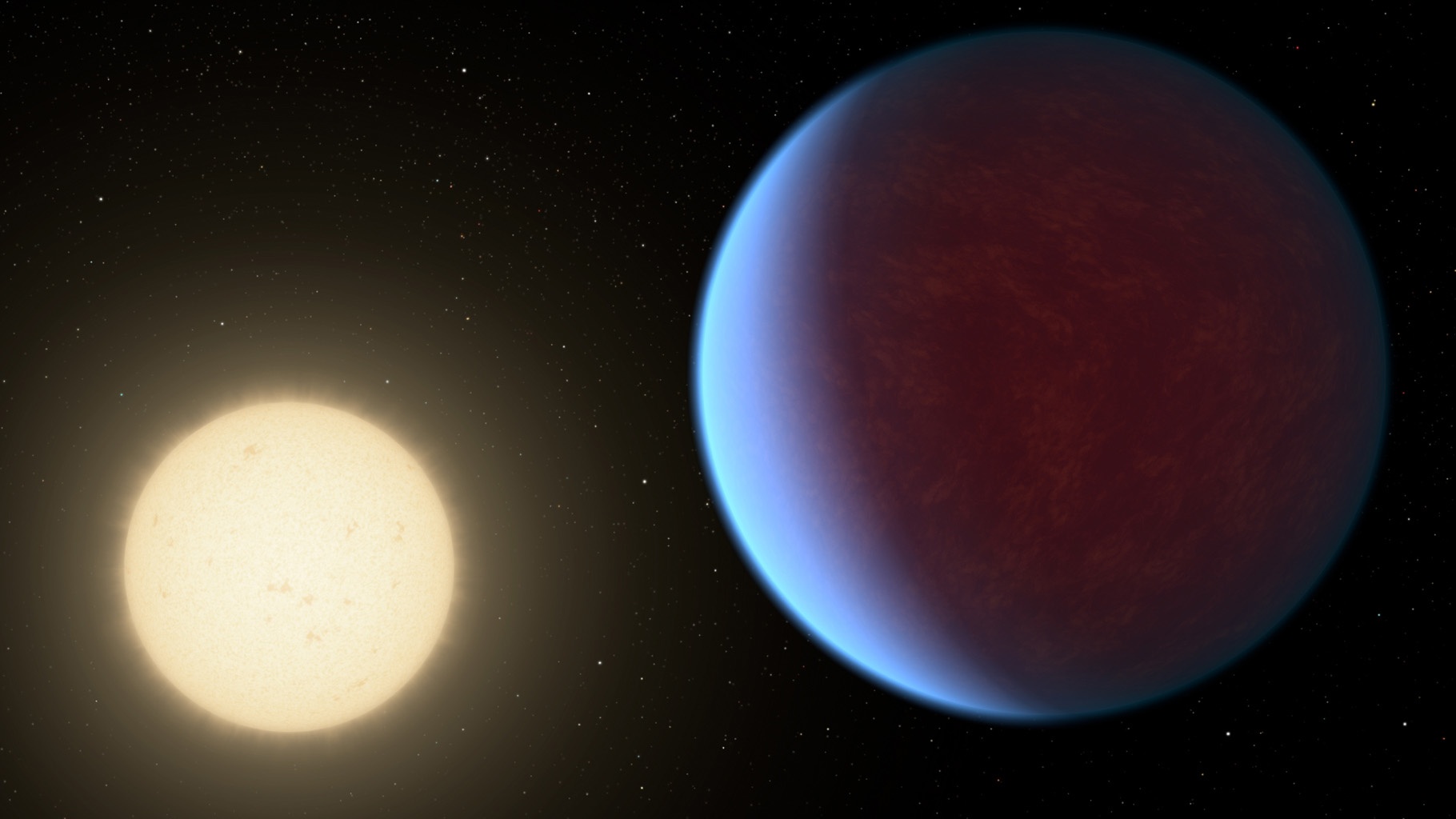In the past decade and a half, a total of 4,164 thousand planets have been discovered beyond our Solar System, while another 5220 await confirmation. The majority of these were detected by the venerable Kepler Space Telescope, while the remainder have been observed by the Transitting Exoplanet Survey Satellite (TESS) and a combination of other satellites and ground-based telescopes.
But in what is a new record, a known super-Earth was recently observed by the Arcsecond Space Telescope Enabling Research in Astrophysics (ASTERIA) small satellite – making it the smallest observatory to spot an exoplanet. Led by a team from the Massachusetts Institute of Technology (MIT), this mission has demonstrated that small satellites can perform complex tasks in space normally carried out by large observatories.
The team responsible for this breakthrough was led by Mary Knapp, a research scientist with the MIT Haystack Observatory. She was joined by a team of MIT astrophysicists and planetary scientists, physicists from MIT’s Kavli Institute for Astrophysics and Space Research, and researchers from the Center for Space and Habitability (CSH) at the University of Bern and NASA’s Jet Propulsion Laboratory.

Originally deployed to Low Earth Orbit (LEO) in November of 2017 from the International Space Station (ISS), the ASTERIA CubeSat is a technology demonstrator with a major goal. More than anything, it was designed to show that small satellites can perform exoplanet studies – something that has required multi-billion-dollar space observatories until now.
As the team describes in their study, which recently appeared in the Astrophysical Journal, ASTERIA proved this by successfully observing 55 Cancri e. This super-Earth, which was discovered in 2004 (making it one of the earliest) is more than twice the size of Earth and 8 times more massive. It also orbits its star – a main sequence K-type orange dwarf – at a distance of 0.01544 AU (1.5% the distance between Earth and the Sun).
Given its close proximity, 55 Cancri e is exposed to a tremendous amount of heat and is tidally-locked with its sun (where one face is constantly pointed towards it). Because of this, scientists speculate that the surface of the planet may be entirely covered in lava. It’s size, orbit, and short orbital period (16 hours 48 minutes) also make it a prime target for exoplanet-hunting missions using Transit Method.
These characteristics also made it the perfect target to test ASTERIA’s capabilities. Initially, the purpose of the spacecraft was to test technologies and develop new capabilities for future missions. However, the team behind it was also able to develop the capability for fine pointing control – i.e. the spacecraft is able to remain steadily focused on an object for long periods of time.

This is essential when it comes to detecting periodic dips in a star’s brightness, as any bumps or vibrations can lead to false signals. Before the mission ended, the spacecraft was able to remain steady long enough to detect 55 Cancri e by detecting transit signals. Oringally, the mission was meant to last for 90 days but received three mission extensions before the team lost contact with the CubeSat back in December.
As Vanessa Bailey, the principal investigator for ASTERIA’s exoplanet science team, said in a NASA press release:
“Detecting this exoplanet is exciting, because it shows how these new technologies come together in a real application. The fact that ASTERIA lasted more than 20 months beyond its prime mission, giving us valuable extra time to do science, highlights the great engineering that was done at JPL and MIT.”
It is important to note, however, that the transit signal on its own was not enough to indicate a successful detection. This is because 55 Cancri e blocks out only 0.04% of its host star’s light, and such dips are often attributed to other astronomical phenomena. Because of this, ASTERIA made what is known as a “marginal detection,” where the data obtained needed to be compared to previous observations of the planet.

Nevertheless, the fact that 55 Cancri e is so challenging to find using a CubeSat’s optics makes this a major accomplishment for ASTERIA. As Mary Knapp, the ASTERIA project scientist at MIT’s Haystack Observatory and lead author of the study, said:
“We went after a hard target with a small telescope that was not even optimized to make science detections – and we got it, even if just barely. I think this paper validates the concept that motivated the ASTERIA mission: that small spacecraft can contribute something to astrophysics and astronomy.”
While CubeSats cannot be expected to rival larger exoplanet-hunting spacecraft – like the Transiting Exoplanet Survey Satellite (TESS) or the soon-to-be-launched James Webb Space Telescope (JWST) – the ASTERIA mission demonstrates that smaller observatories can play a supporting role. Given that small satellites have fewer demands on their time than large observatories, they could monitor stars in between larger surveys.
In this respect, ASTERIA follows in the footsteps of the Canadian Space Agency’s Microvariability and Oscillations of Stars (MOST) mission, which performed the first transit detection of 55 Cancri e in 2011. Compared to MOST, ASTERIA and its components are one-sixth the volume, making it the smallest planet-hunting satellites in history.

Looking ahead, MIT astrophysicist Sara Seager (the principal investigator for ASTERIA) envisions a follow-up mission involving a constellation of six satellites that would be twice as big as ASTERIA. Seager was recently awarded a NASA Astrophysics Science SmallSat Studies grant to develop this mission concept, which would search for Earth-like exoplanets around nearby Sun-like stars.
This highlights what is arguably the greatest contribution of the ASTERIA mission, which is the way it has tested technologies that will allow small satellites to conduct complex astronomical surveys. As Akshata Krishnamurthy, the co-investigator and science data analysis co-lead for ASTERIA at JPL, explained:
“This mission has mostly been about learning. We’ve discovered so many things that future small satellites will be able to do better because we demonstrated the technology and capabilities first. I think we’ve opened doors.”
In the future, we are likely to be seeing swarms of small satellites or even microsatellites coming together to conduct observations, interferometry, and other advanced forms of astronomy. This will allow for cheaper launches, reduced risk, and greater accessiblitiy, which is what the renewed-era of space exploration is all about.
Further Reading: NASA/JPL


The other day in one of Fraser’s events the subject came up of the future Trident spacecraft flyby of the moon Triton. ¿Should such missions leave Cubesats behind as standard that can send data large distances? It seems a waste not to.
Every flyby to somewhere notable should leave some incarnation of a very long term Cubesat, with some optical capability included, at that location and that means that we’ll be there permanently ahead of the game.
Its not only seviceability of spacecraft that can extend its lifetime in what it was used for when travelling to places but what it can leave behind still working